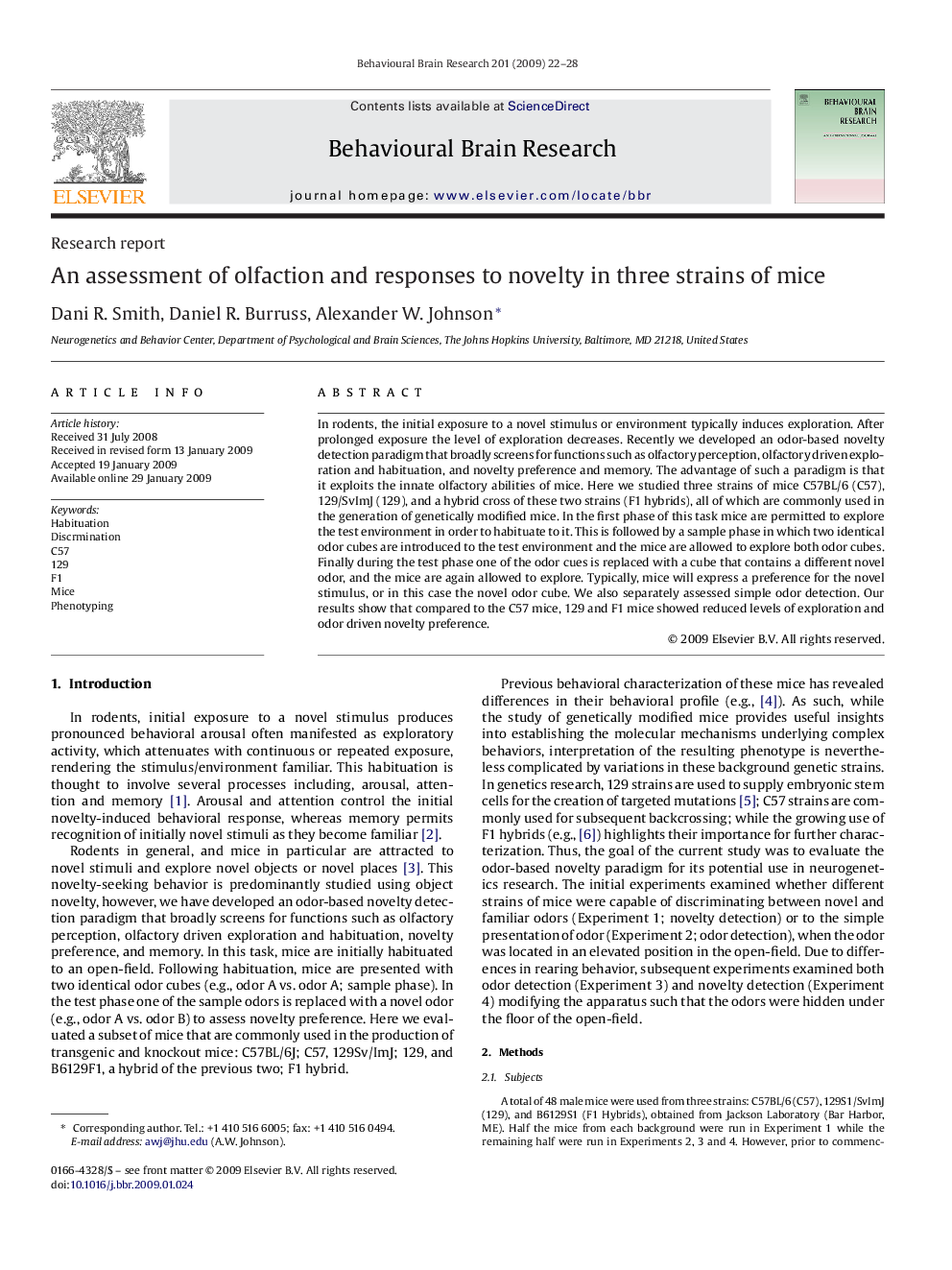| Article ID | Journal | Published Year | Pages | File Type |
|---|---|---|---|---|
| 4314622 | Behavioural Brain Research | 2009 | 7 Pages |
In rodents, the initial exposure to a novel stimulus or environment typically induces exploration. After prolonged exposure the level of exploration decreases. Recently we developed an odor-based novelty detection paradigm that broadly screens for functions such as olfactory perception, olfactory driven exploration and habituation, and novelty preference and memory. The advantage of such a paradigm is that it exploits the innate olfactory abilities of mice. Here we studied three strains of mice C57BL/6 (C57), 129/SvImJ (129), and a hybrid cross of these two strains (F1 hybrids), all of which are commonly used in the generation of genetically modified mice. In the first phase of this task mice are permitted to explore the test environment in order to habituate to it. This is followed by a sample phase in which two identical odor cubes are introduced to the test environment and the mice are allowed to explore both odor cubes. Finally during the test phase one of the odor cues is replaced with a cube that contains a different novel odor, and the mice are again allowed to explore. Typically, mice will express a preference for the novel stimulus, or in this case the novel odor cube. We also separately assessed simple odor detection. Our results show that compared to the C57 mice, 129 and F1 mice showed reduced levels of exploration and odor driven novelty preference.
